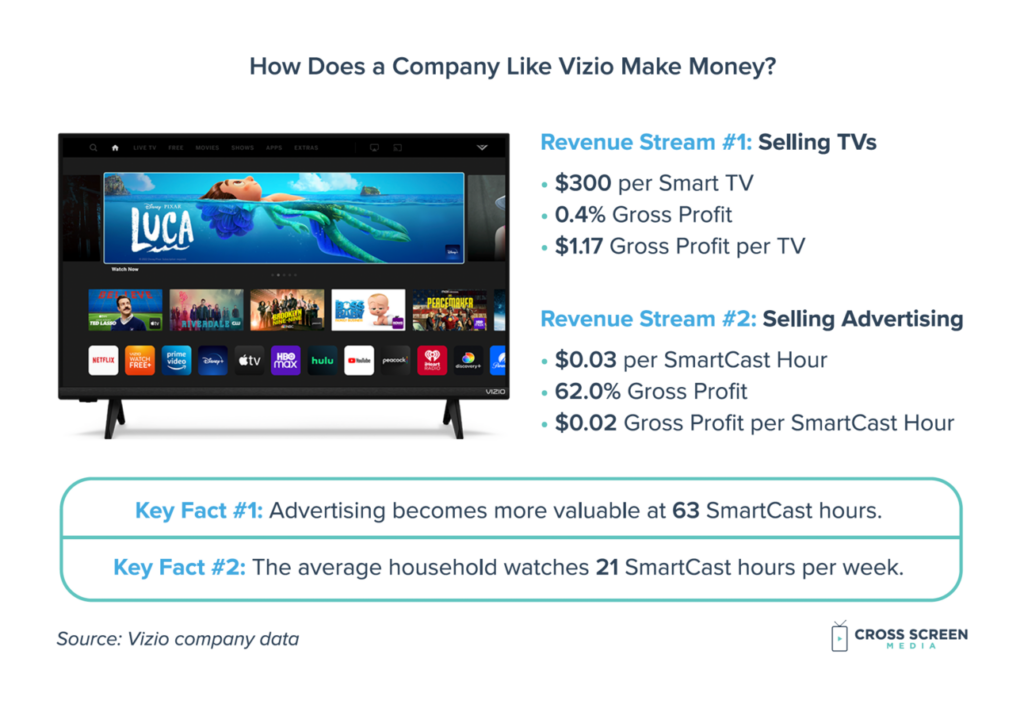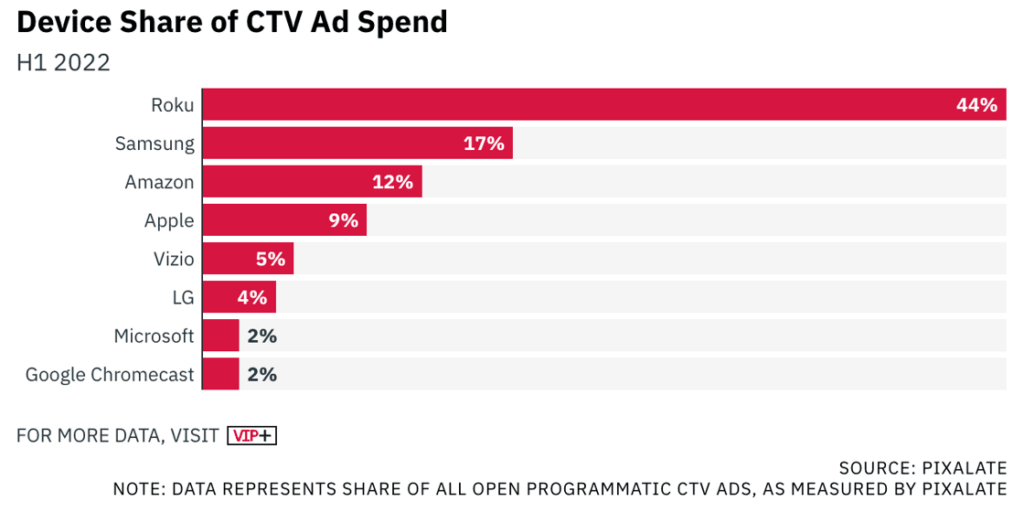Six big questions re: a TradeDesk smart TV operating system:
1) What does TradeDesk gain by building a smart TVOS?
2) How do TV manufacturers make money?
3) Which TVOS has the largest footprint?
4) How often do consumers replace their smart TV?
5) Does the TVOS market need another offering?
6) What does a win look like for TradeDesk?
Big question #1: What does TradeDesk gain by building a smart TVOS?
Priorities for TradeDesk launching a TVOS:
1) Leverage – Removes dependency on companies such as Roku that could shut them out of the smart TV ad space
2) Ad inventory – Owning TVOS creates additional inventory through distribution deals with streaming apps
3) Data – Getting closer to the glass (ACR) allows TTD to offer better targeting and measurement
Mr. Screens’ take: TradeDesk launching a TVOS is 99% about leverage with streaming apps and maintaining access to ad supply. The remaining 1% goes to non-revenue objectives (better content discovery, etc.).
Alternative take: Rich Greenfield and Jeff Green, have made opposing arguments worth considering.
Quote from Rich Greenfield – General Partner @ LightShed Partners:
“The Trade Desk does not want to take a share of advertising inventory from CTV programmers. The Trade Desk simply wants to go back to how CTV started, where the tvOS platform takes a cut of ad revenue. In The Trade Desk’s case that is already happening, as it is the largest demand side platform, excluding the closed Google/YouTube and Amazon ecosystems. In turn, if app makers such as Netflix, Hulu, Peacock, etc. retain all of their ad inventory, more inventory will flow through The Trade Desk.”
Podcast: Jeff Green on how The Trade Desk’s new OS can improve the CTV ecosystem

Quote from Tim Peterson – Senior Reporter @ Digiday:
“As much as that may sound like a lame April Fool’s Joke, it’s November. So clearly there must be good reason that a company worth $63 billion thinks getting into the CTV platform business is a shrewd move. And that reason has to be better than just what TTD cited in its press release of its CTV platform — named Ventura — solving for “inefficient advertising supply chains, and content conflicts-of-interest,” right? Right?”
Quote from Charlie Munger – Former Vice Chairman @ Berkshire Hathaway:
“Show me the incentive and I’ll show you the outcome.”
Big question #2: How do TV manufacturers make money?
Quick answer: Advertising. Vizio is a great example of a company that generates ≈ 100% of its profit from advertising vs. selling TVs.
A word from our sponsor: In my book, Screen Wars: Win the Battle for Attention with Convergent TV, I explain how winning the TVOS wars is about making money from ads rather than TVs.


Big question #3: Which TVOS has the largest footprint?
Share of smart TV OS install base in the United States, according to Kagan:
1) Roku OS (Roku) – 26%
2) Fire TV (Amazon) – 17%
3) Tizen Smart Hub (Samsung) – 14%
4) Android TV (Alphabet) – 13%
5) WebOS (LG) – 9%
6) SmartCast (Vizio) – 7%
7) Apple TVOS (Apple) – 4%
8) Pre-Tizen Smart Hub (Samsung) – 2%
9) Chromecast (Alphabet) – 0%
10) Others – 8%

Big question #4: How often do consumers replace their smart TV?
Quick answer: The average TV lasts 7 years.
Quick math on TradeDesk TVOS market opportunity:
1) 6.6-year average lifespan for smart TV
2) 15% are replaced every year
3) 321M smart TVs/devices installed in the U.S.
4) 49M are replaced each year
5) Assume 10% market share for TradeDesk
6) 5M TradeDesk TVs sold per year
7) 15M TradeDesk TVs by 2027
8) 125M TV households in the U.S.
9) 2.6 TVs/HH
10) 6M HHs will have TradeDesk TV by 2027
11) 5% reach for TradeDesk in the U.S.
Big question #5: Does the TVOS market need another offering?
Quick answer: This is the same question I asked when Comcast launched their line of smart TVs. For this to work, you need three things to happen:
1) TV manufacturers (OEMs) use your OS
2) Consumers purchase TVs with that OS
3) Consumers spend most of their streaming time on your OS vs. another device (Roku, etc.)
Tales from the Screens family: Getting consumers to use your OS for streaming is a harder problem than most think. We have 8 TVs in our household (6 Samsung + 2 Vizio), and all but one have a Roku we use to access linear/streaming content.
Why this matters: Our household would show Roku as 47% (7/15) of the installed devices but 100% of the ad impressions since it is how we watch TV.
U.S. share for Roku OS:
1) Ad spend – 44%
2) Install base – 26%

Big question #6: What does a win look like for TradeDesk?
Quick answer: A big win is becoming a top 3 player in the smart TVOS market. A small win is developing plumbing that gives the TradeDesk DSP a unique advantage in streaming TV advertising.
Mr. Screens’ Crystal Ball: I struggle to rationalize how TradeDesk even makes it to the 10% market share on new TVs sold. Even if they did that, they would be at 7% of Roku’s market share. On the positive side, this asymmetric bet would pay off hugely if they could crush it and become a top 3 smart TV OS. If they fail, then the capital wasted will not hurt their business. Splitting their attention and chasing two rabbits (ad buying platform, consumer-facing smart TVOS) may be a costly mistake.
Quote from Tim Peterson – Senior Reporter @ Digiday:
“The Trade Desk’s decision to develop a connected TV platform is weird. Weirder even than a chicken sandwich chain creating a streaming service. But apparently it’s happening.”



